Abstract
1. With histamine used as agonist, pKB values were estimated for seventeen histamine H2-receptor antagonists on assays involving acid secretion by the mouse isolated stomach and contraction frequency of the guinea-pig right atrium. 2. With the exception of oxmetidine, SK&F 94,826 and SK&F 94,206 on the right atrium assay, the compounds behaved as simple competitive antagonists on both assays. Although the former three compounds produced concentration-dependent, parallel, displacement of the histamine concentration-effect curves, subsequent analysis indicated Schild plot slope parameters significantly less than unity. However, the application of a combined dose-ratio analysis indicated that their antagonistic behaviour did not differ from expectations for simple competition at dose-ratios of approximately 20, and pKB values were estimated on this basis. 3. In accordance with previously reported data, pKB values were found to be consistently lower on the stomach than atrial assays. The pKB value for tiotidine was underestimated to the same extent on the stomach assay when impromidine was used as agonist. 4. The removal of the serosal muscle from the mouse stomach, achieved by using an isolated, perfused, mucosal sheet preparation, did not significantly affect the underestimation of the pKB value for metiamide. 5. Linear regressional analysis indicated a significant, positive, correlation between lipophilicity (log POCT/H2O) of the antagonists and the degree of antagonist pKB value underestimation on the gastric secretion assay.
Full text
PDF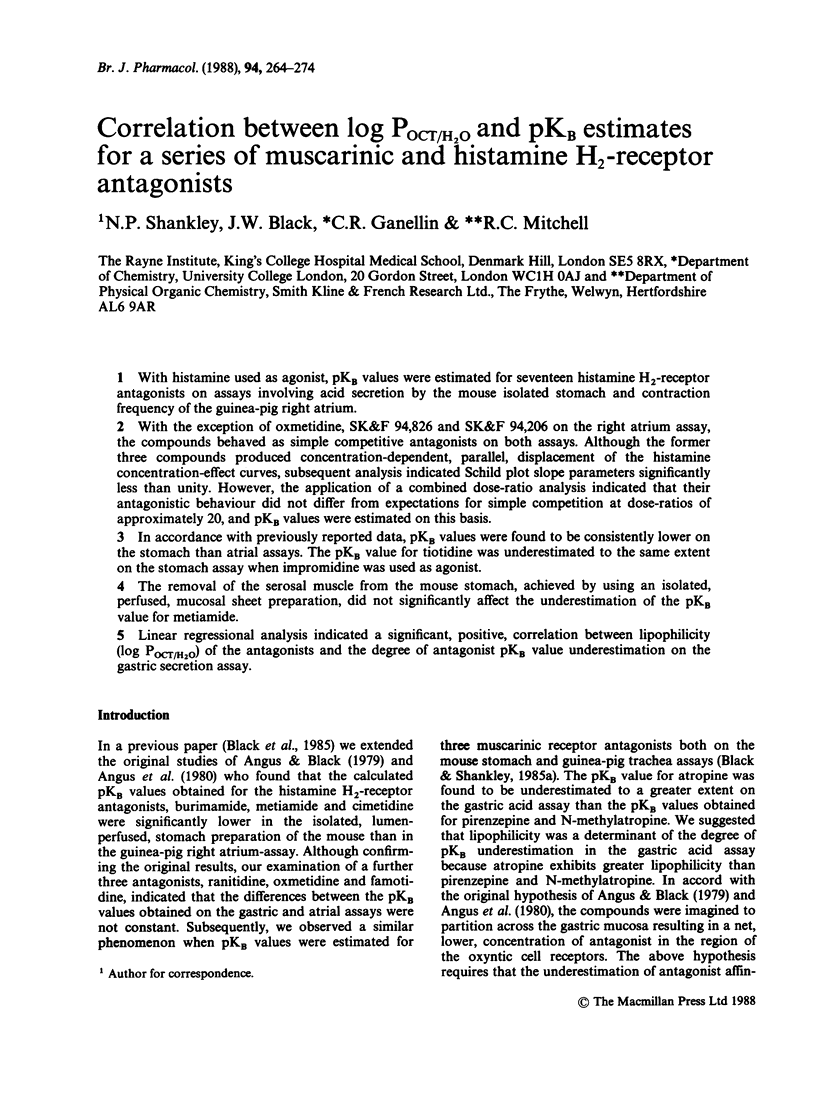

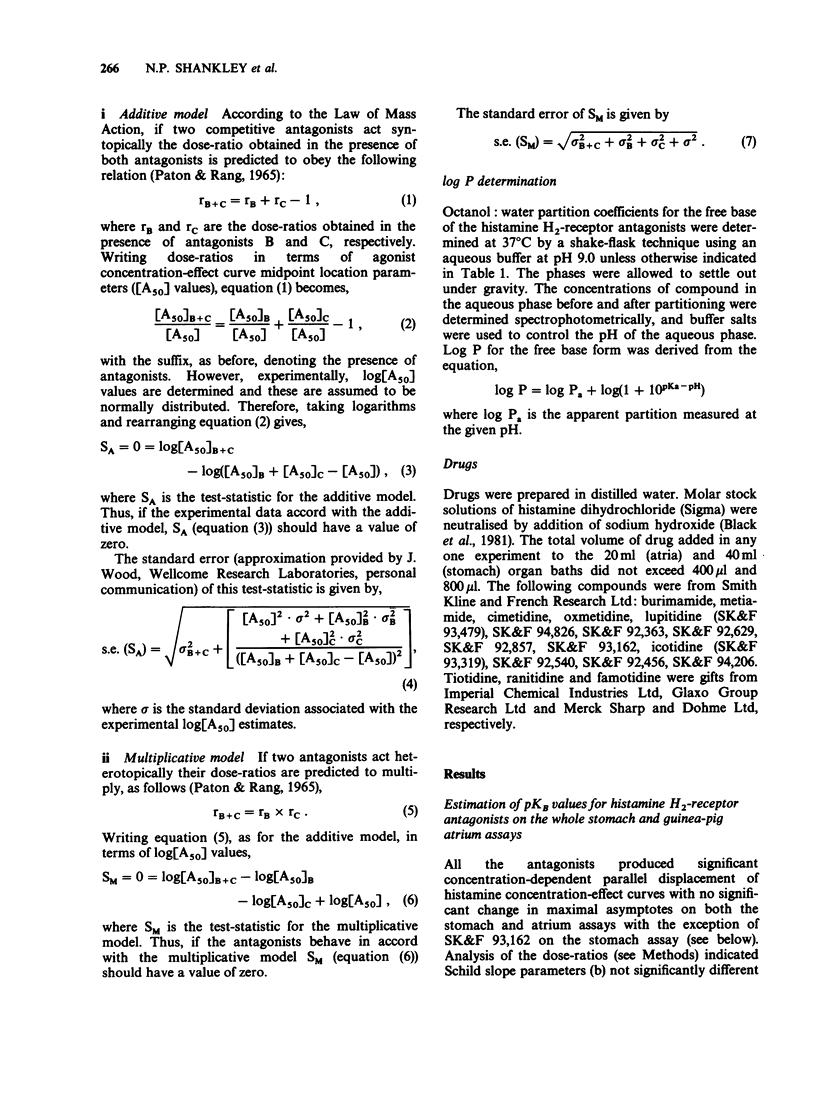
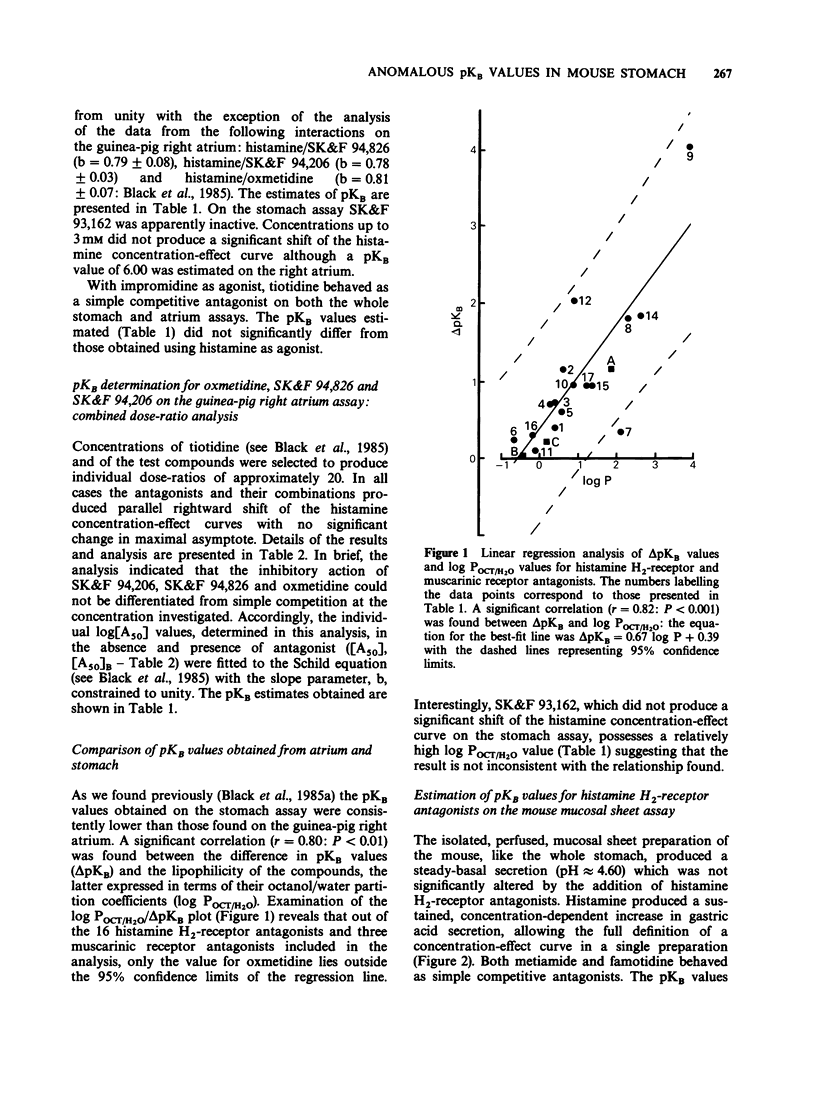
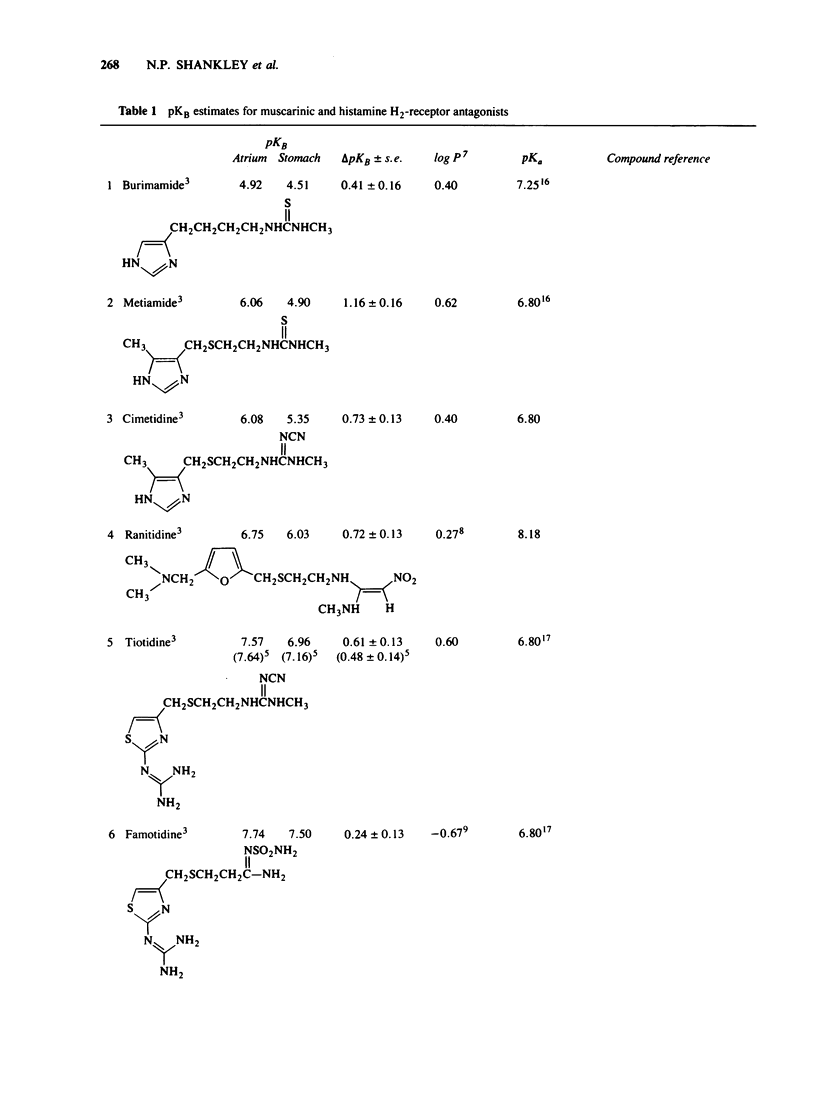
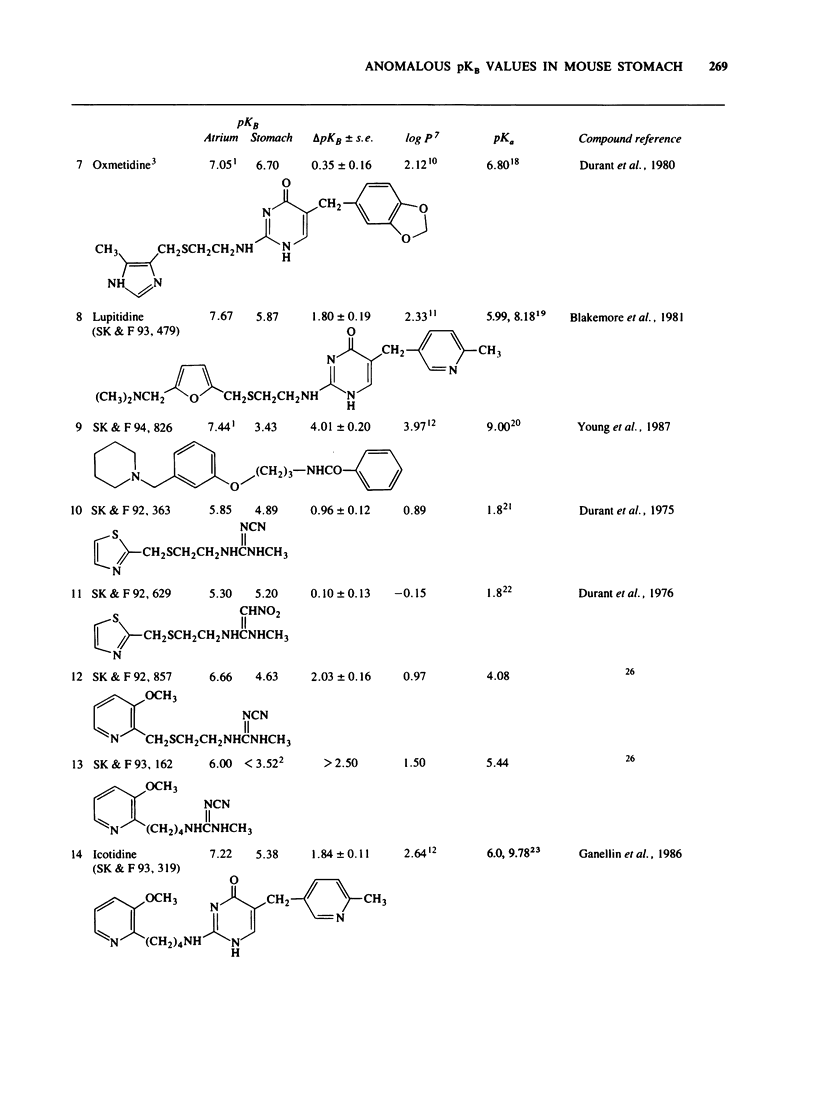

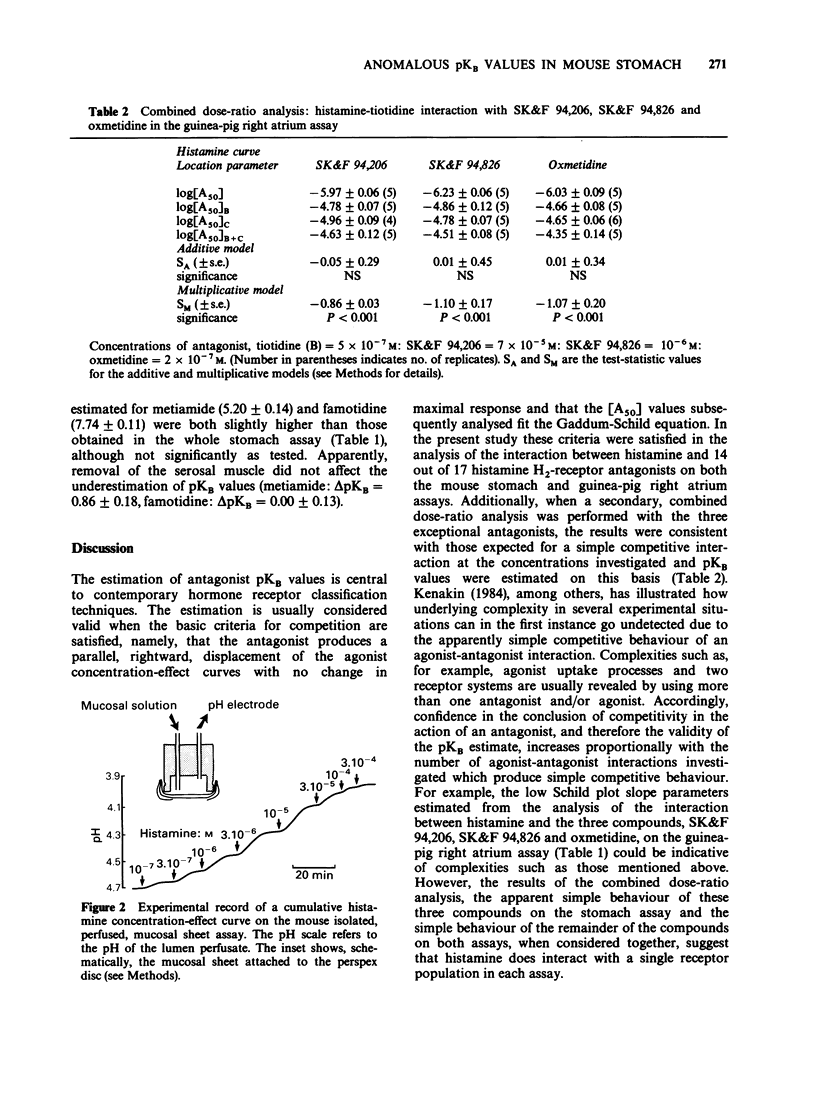
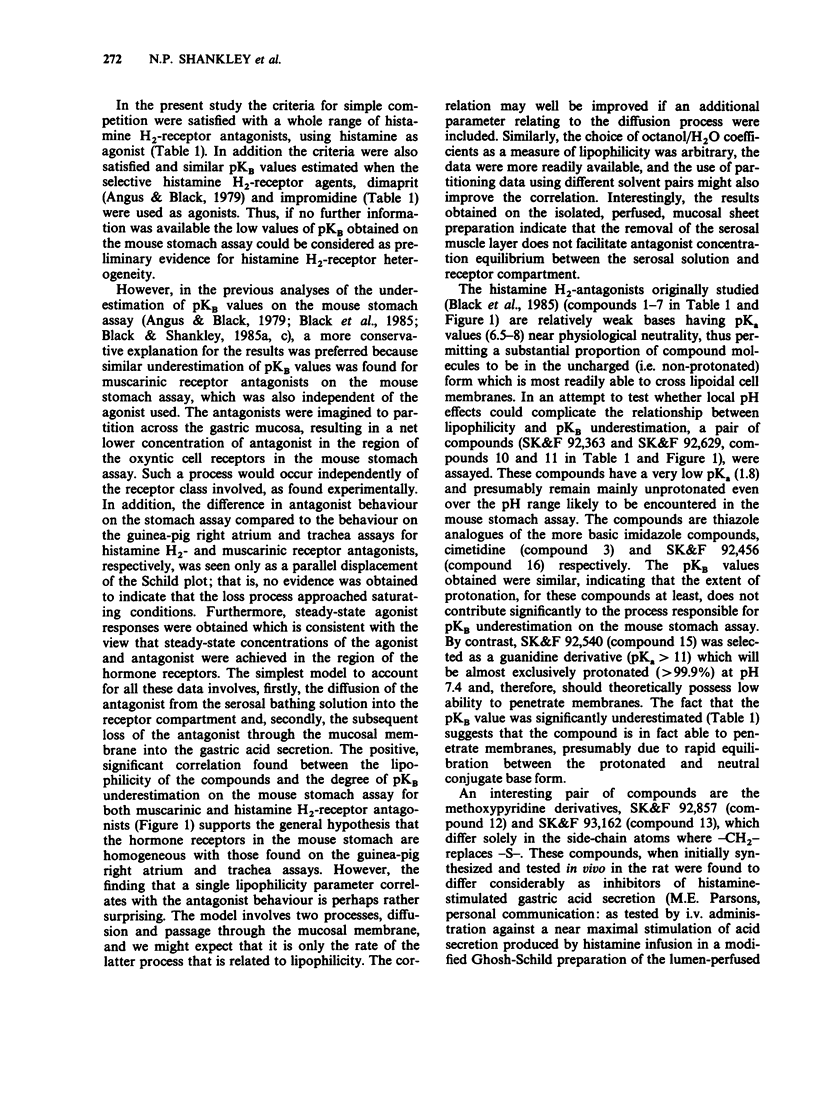
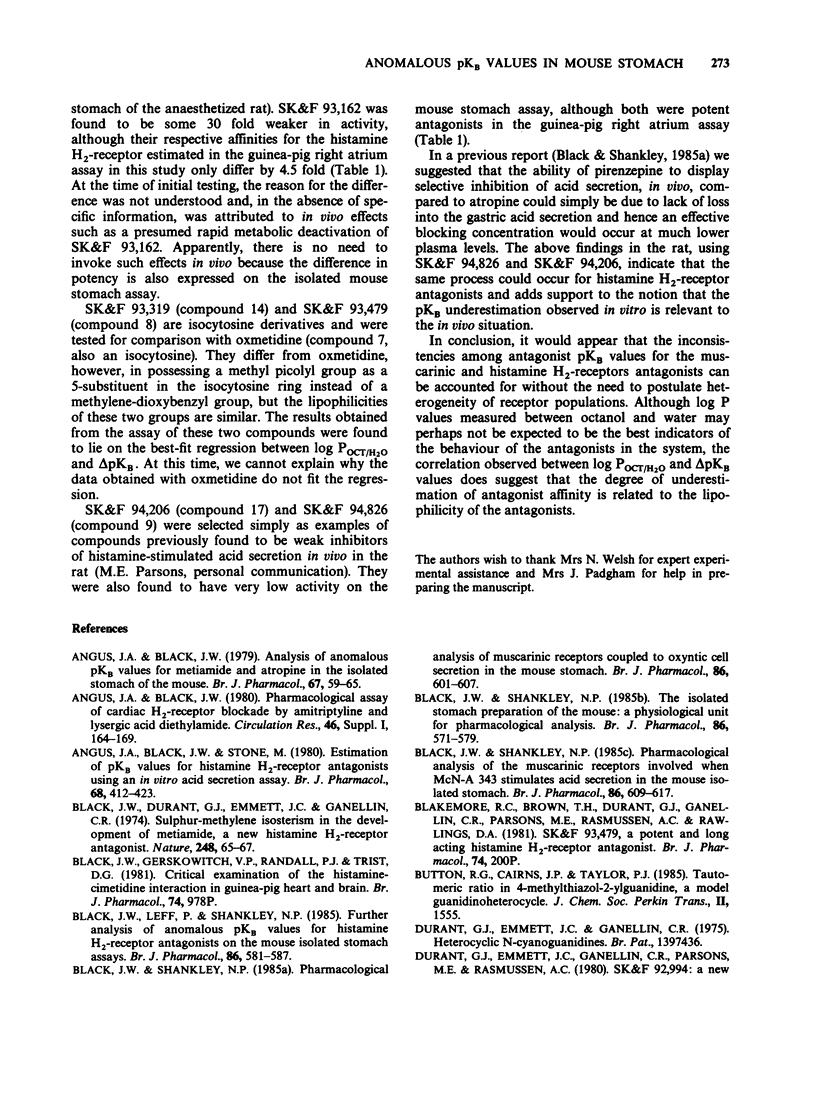
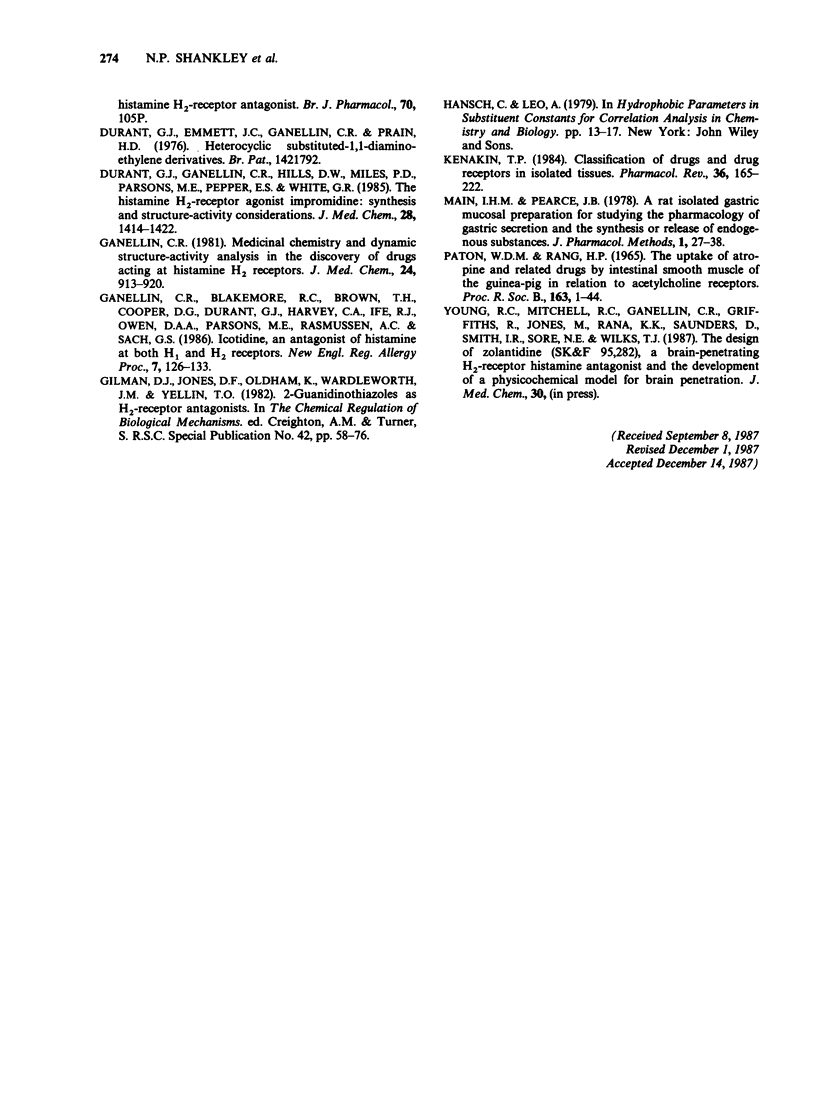
Selected References
These references are in PubMed. This may not be the complete list of references from this article.
- Angus J. A., Black J. W. Analysis of anomalous pKb values for metiamide and atropine in the isolated stomach of the mouse. Br J Pharmacol. 1979 Sep;67(1):59–65. [PMC free article] [PubMed] [Google Scholar]
- Angus J. A., Black J. W., Stone M. Estimation of pKB values for histamine H2-receptor antagonists using an in vitro acid secretion assay. Br J Pharmacol. 1980 Mar;68(3):413–423. doi: 10.1111/j.1476-5381.1980.tb14555.x. [DOI] [PMC free article] [PubMed] [Google Scholar]
- Black J. W., Durant G. J., Emmett J. C., Ganellin C. R. Sulphur-methylene isosterism in the development of metiamide, a new histamine H2-receptor antagonist. Nature. 1974 Mar 1;248(5443):65–67. doi: 10.1038/248065a0. [DOI] [PubMed] [Google Scholar]
- Black J. W., Leff P., Shankley N. P. Further analysis of anomalous pKB values for histamine H2-receptor antagonists on the mouse isolated stomach assay. Br J Pharmacol. 1985 Nov;86(3):581–587. doi: 10.1111/j.1476-5381.1985.tb08934.x. [DOI] [PMC free article] [PubMed] [Google Scholar]
- Black J. W., Shankley N. P. Pharmacological analysis of muscarinic receptors coupled to oxyntic cell secretion in the mouse stomach. Br J Pharmacol. 1985 Nov;86(3):601–607. doi: 10.1111/j.1476-5381.1985.tb08936.x. [DOI] [PMC free article] [PubMed] [Google Scholar]
- Black J. W., Shankley N. P. Pharmacological analysis of the muscarinic receptors involved when McN-A 343 stimulates acid secretion in the mouse isolated stomach. Br J Pharmacol. 1985 Nov;86(3):609–617. doi: 10.1111/j.1476-5381.1985.tb08937.x. [DOI] [PMC free article] [PubMed] [Google Scholar]
- Black J. W., Shankley N. P. The isolated stomach preparation of the mouse: a physiological unit for pharmacological analysis. Br J Pharmacol. 1985 Nov;86(3):571–579. doi: 10.1111/j.1476-5381.1985.tb08933.x. [DOI] [PMC free article] [PubMed] [Google Scholar]
- Durant G. J., Ganellin C. R., Hills D. W., Miles P. D., Parsons M. E., Pepper E. S., White G. R. The histamine H2 receptor agonist impromidine: synthesis and structure-activity considerations. J Med Chem. 1985 Oct;28(10):1414–1422. doi: 10.1021/jm00148a007. [DOI] [PubMed] [Google Scholar]
- Ganellin C. R., Blakemore R. C., Brown T. H., Cooper D. G., Durant G. J., Harvey C. A., Ife R. J., Owen D. A., Parsons M. E., Rasmussen A. C. Icotidine, an antagonist of histamine at both H1 and H2 receptors. N Engl Reg Allergy Proc. 1986 Mar-Apr;7(2):126–133. doi: 10.2500/108854186779047762. [DOI] [PubMed] [Google Scholar]
- Ganellin R. 1980 Award in Medicinal Chemistry: Medicinal chemistry and dynamic structure-activity analysis in the discovery of drugs acting at histamine H2 receptors. J Med Chem. 1981 Aug;24(8):913–920. doi: 10.1021/jm00140a001. [DOI] [PubMed] [Google Scholar]
- Kenakin T. P. The classification of drugs and drug receptors in isolated tissues. Pharmacol Rev. 1984 Sep;36(3):165–222. [PubMed] [Google Scholar]
- PATON W. D., RANG H. P. THE UPTAKE OF ATROPINE AND RELATED DRUGS BY INTESTINAL SMOOTH MUSCLE OF THE GUINEA-PIG IN RELATION TO ACETYLCHOLINE RECEPTORS. Proc R Soc Lond B Biol Sci. 1965 Aug 24;163:1–44. doi: 10.1098/rspb.1965.0058. [DOI] [PubMed] [Google Scholar]


